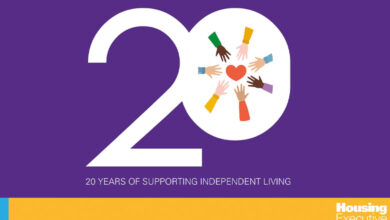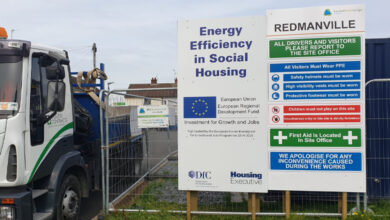Developing a community plan
Director of Legacy at Derry City and Strabane Council, Oonagh McGillion explains the importance of engagement in community planning.
 For Derry City and Strabane Council’s Director of Legacy, Oonagh McGillion and the Community Planning team “every day is a learning day” when it comes to community planning. Derry City and Strabane Council area boasts a vibrant city centre with a significant rural hinterland. Notwithstanding many recent successes it faces significant social problems with a high degree of economic inactivity.
For Derry City and Strabane Council’s Director of Legacy, Oonagh McGillion and the Community Planning team “every day is a learning day” when it comes to community planning. Derry City and Strabane Council area boasts a vibrant city centre with a significant rural hinterland. Notwithstanding many recent successes it faces significant social problems with a high degree of economic inactivity.
The team are not totally new to the concept of community planning as both the former Derry City Council and its Strabane equivalent had some experience engaging stakeholders and received feedback from many in the public, private, community and voluntary sectors with regards to the One Plan for Derry and the Strabane Future Search. “This experience from both the Ilex officer team and council has provided valuable learning on effective community engagement,” says McGillion.
Using this experience, the team committed to developing an effective framework for community planning through a co-design process. These plans have been developed alongside agencies and key stakeholders throughout the framework’s development. An effective community plan is one that brings all stakeholders along. The team’s previous experience has also taught them that three key ingredients are instrumental to any strategic framework’s successful development.
The first of these ingredients is leadership, McGillion notes the significance of effective leadership within any organisation. She also states that it is important to never be afraid to ask for help and has praised various sources for stepping forward to offer their advice throughout the framework’s development. However she identifies communication as the most significant ingredient of any successful development.
Communication
“Communication has been fundamental to our community planning framework from the very beginning,” states McGillion. “We didn’t want it to be seen as the council’s community plan, it is a plan that belongs to everyone in the city and region. Council assigned staff resources with a dedicated budget and developed a marketing and communication plan that underpinned everything we did. With over 1,700 people engaged to date, we are pleased that local citizens and our partners in the public, private, community and voluntary sectors have recognised the value in participating in the development of the plan.”
In the development of this framework McGillion advised that the council undertook a citizen survey as part of the methodology to establish the baseline position. This robust survey meant the team knew exactly what citizens thought of services currently being delivered and what they expected from them. The last engagement with citizens was in 2012 but recently the team were able to return to the public and review the progress that has been made.
The Derry City and Strabane community plan framework has three pillars focused on social, economic and environmental development. These pillars allow for a very strong tie in with  strategic partners and agencies. “We were able to go to our partners and agencies and ask them very directly how they think they are going to be able deliver across these three pillars,” says McGillion. “In June 2015 we developed eight thematic working groups to identify our needs and priorities. We spent time focusing on where we wanted to be in 15 years’ time and what we want to have changed. We also gave careful consideration to how we are going to measure success. A lot of time has been spent on developing a set of indicators and developing the necessary actions for effective delivery. It is easy to think about what we would like to see in five years’ time, it is more difficult to think about our 10 year targets and even more difficult to accurately predict what we will need in 15 years’ time.”
strategic partners and agencies. “We were able to go to our partners and agencies and ask them very directly how they think they are going to be able deliver across these three pillars,” says McGillion. “In June 2015 we developed eight thematic working groups to identify our needs and priorities. We spent time focusing on where we wanted to be in 15 years’ time and what we want to have changed. We also gave careful consideration to how we are going to measure success. A lot of time has been spent on developing a set of indicators and developing the necessary actions for effective delivery. It is easy to think about what we would like to see in five years’ time, it is more difficult to think about our 10 year targets and even more difficult to accurately predict what we will need in 15 years’ time.”
This process has led to the development of 24 strategic outcomes that have gone through many revisions [they are currently on their 17th revision]. A lot of work has gone into making them as relevant and effective as they can be. The outcomes will also be reviewed on an ongoing basis with plans to review outcomes every two years in place.
Next steps
With the framework now in the testing stage, McGillion compares the current stage of development to a jigsaw as the 24 strategic outcomes are integrated across the three pillars. The Community Planning team are also working with colleagues in the Ulster University’s Economic Policy Centre to assess the potential economic impact of the various actions. “These pillars aren’t silos,” states McGillion. “For example, in order to attract foreign direct investment, the road infrastructure needs to be in place as well as the skills to attract investors but we also need to demonstrate strong quality of life with a vibrant cultural and cohesive city and district.”
With impending elections and the introduction of new Stormont departments McGillion is aware of the need to work with the Assembly and integrate its plan. She is also keen to see dialogue develop between the Assembly and local councils in keeping with the spirit of public administration reform and in particular in the development of the new Programme for Government.
“By the time the autumn arrives we are confident that we will have a robust document that has come through the full Equality Impact Assessment (EQIA). The EQIA completely underpins our community plan and ensures that equality is grounded within the plan,” says McGillion. This is part of our strategic framework, and in addition we have the Local Development Plan, eight local community plans as well as a NW Cross border plan. Developing and integrating all of these plans gives us the opportunity to develop unique opportunities for our area including some significant cross-border projects.”
The community plan will be delivered through themes and will be implemented by partnerships with key stakeholders. In developing the local community plans the council has used a similar process to that used for the strategic community plan. Local groups have been consulted to ensure that the plan sat comfortably within the overall family of plans and council will assist these local groups in the delivery and development of these plans. However, while acknowledging that consultation is vital, McGillion is also wary of the negative impact too much consultation could have and the importance of cross referencing between various consultations exercises that are taking place for the Local Development Plan and the EU Rural Development Programme.
“If we want to ensure effective delivery we can’t keep duplicating all the effort that is going into these consultations, we need to learn from them and move forward efficiently,” McGillion concludes.





